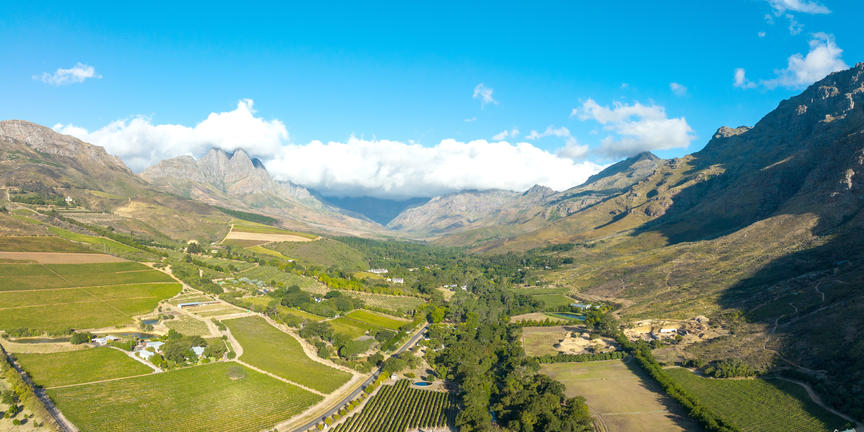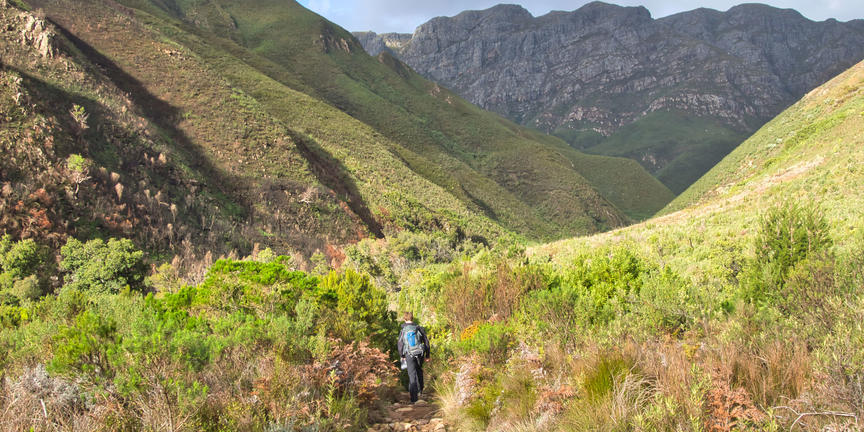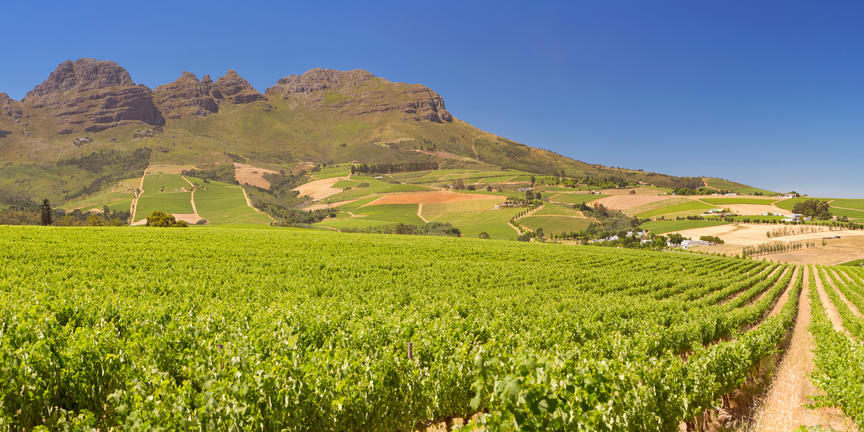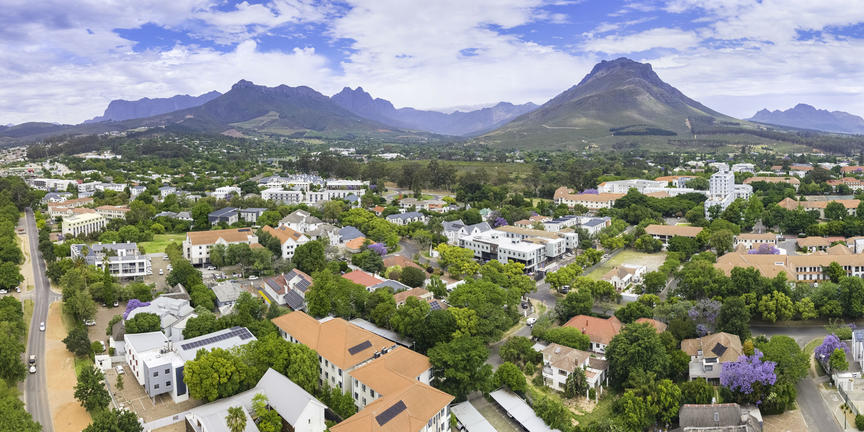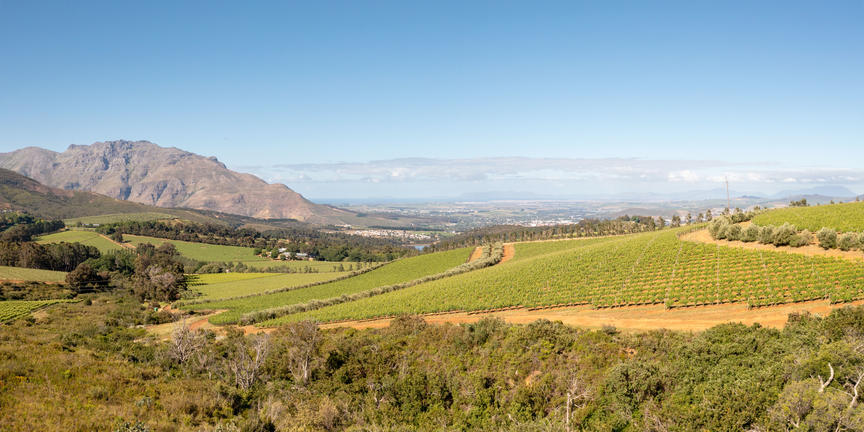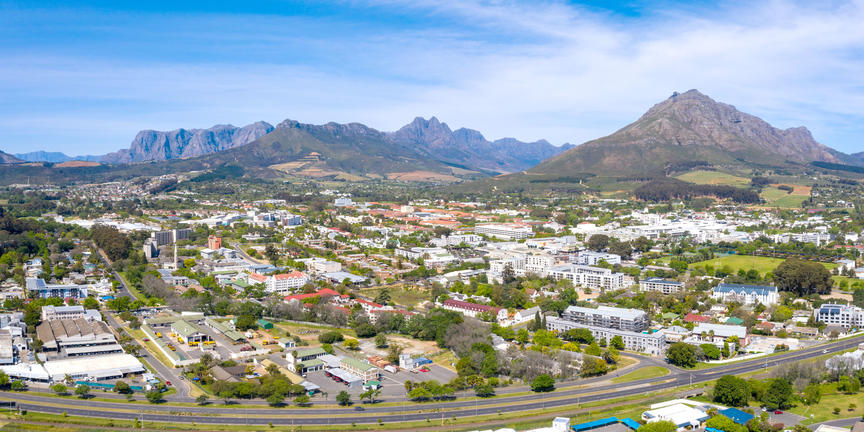Stellenbosch, 50 kilometres east of Cape Town, lies in a sheltered valley surrounded by unforgettable mountains. While it is the second oldest European settlement in the Western Cape after Cape Town, people had lived here as far back as Paleolithic times.
After its discovery, Stellenbosch was quickly identified, thanks to its Mediterranean climate of hot dry summers and cool wet winters with great potential for agriculture, as a place to settle. Lying at the foot of the Cape Fold mountain range, the rich soil was responsible for producing vegetables to sustain the Dutch East India merchant ships en route to other Dutch colonies in the East. Stellenbosch soon became a bustling town.
Good wine was also soon in demand and vines were planted by Huguenot refugees fleeing religious persecution in Europe in 1690. Stellenbosch quickly became the primary location for viticulture and viticulture research. The South African wine industry now produces about 1,000,000,000 litres of wine annually. As part of the Cape Winelands, the Stellenbosch Wine Routes are part of the six most popular tourist attractions in South Africa and are also connected to the global Great Wine Capitals Network.
In 1710, most of the town, including the church, was destroyed by a fire. The earliest building still standing in the area dates back to 1689. The church, known as the Mother Church, was rebuilt in 1723. In the early days of the Second Boer War, Stellenbosch was a British military base.
The opening of the Dutch Reformed Church theological seminary in 1859 was the first educational institution. Rhenish Girls' High School, established in 1860, is the oldest girls’ school in South Africa. Victoria College became the University of Stellenbosch in 1918, and is one of South Africa's leading universities, an internationally recognized education centre and one of the leading universities on the African continent. It is also one of two learning centres in South Africa training wine makers. Its Department of Electrical and Electronic Engineering is the only university department in the southern hemisphere to have successfully built and launched a communications satellite, Sunsat, which orbited the earth for 3 years.
The historical atmosphere of the town is tangible. The buildings reflect over three centuries of occupation, including Dutch, Georgian and Victorian architecture always surrounded by the dramatic mountainous backdrop. A myriad of museums and places of interest are found along the oak-lined streets.
